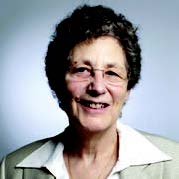Walk SF, a San Francisco nonprofit pedestrian advocacy organization, is working to make San Francisco a safer, more walkable city for pedestrians. Seniors and lower income communities are presently more at risk for injury or death from pedestrian traffic collisions. In 2014, seniors accounted for nearly half of all traffic deaths, even though they represent only 20% of the city’s population. Regardless of age group, people are more at risk when walking in San Francisco than in almost all other cities in the U.S. Approximately 60% of traffic deaths in 2014 were people walking, which is four times the national average.
I recently got a chance to speak with Nicole Ferrara, Executive Director of Walk SF, to discuss the problem. She said, “San Francisco is a city where people can age in place with great access to transit, close proximity to services and activities for seniors to engage in. Our transportation system, however, has not kept pace with other community resources.” Ferrara added, “It’s not safe for seniors to walk when seniors account for approximately 50% of all pedestrian deaths.”
In the recently released report, Street Score 2015: Annual Report Card on Walking (http://bit.ly/WalkSFStreet Score2015), Walk SF documents how well, and not, San Francisco is meeting its goals for increasing pedestrian safety. Ferrara explained that “the report is our way of keeping the city accountable.” It’s important to note that the report card shows no decrease in serious injuries and fatalities, despite new safety projects.
Mayor Lee in 2013 committed to reducing by half, by the year 2021, the number of pedestrians severely injured and killed in San Francisco. In March of 2014, the Mayor revised that commitment to a goal of zero traffic deaths by 2024. He also secured $17 million to improve pedestrian safety over the next 5 years. The Mayor additionally rolled out WalkFirst, a ground-breaking pedestrian safety initiative. It is the first of its kind in the country to identify where and why pedestrian collisions occur, with the goal of devel-oping and delivering the most effective safety improvements.
I asked Ferrara why she thought that, despite such efforts and engineering improvements, the city did not meet benchmarks for a reduction in injuries and deaths. She replied, “Injuries are strongly tied to dangerous street design—streets like Harrison in SOMA, Golden Gate in the Tenderloin, or Geary in the Richmond. These are among the 6% of streets that account for over 60% of severe and fatal traffic deaths.” She continued, “We will need to see a greater increase in the quantity and quality of pedestrian safety projects addressing those streets, and that’s when we can expect to see the significant declines in severe and fatal injuries that our community deserves.”
I then asked her why pedestrian collision incidents are so high for seniors, in particular. She responded:
“Seniors are more vulnerable to severe and fatal injuries in general. Seniors are less able to recover from collisions. They are more likely than younger pedestrians to sustain a serious injury, or suffer a fatality. For instance, when a senior is hit by a car traveling 30 mph, that person has a 38% chance of survival. Compare that to 15–59 year olds, who have a 93% chance of survival. I hope that stat alone encourages everyone to slow down.”
She added, “Seniors need longer crossing times, leading pedestrian intervals that give people on foot a head start before those in cars can proceed, new signals at dangerous intersections, and most of all, slower traffic.”
She and her team at Walk SF are advocating for a comprehensive Safe Streets for Seniors program that would combine more aggressive imple-mentation of senior zones, enforc-ement of those zones, and public education about them. This program, as well as the non-profit’s other work and Ferrara’s words here, provide hope.
“We know the city, especially SFMTA (San Francisco Municipal Trans-portation Agency) and SFDPH (San Francisco Department of Health) are working hard to ramp up and hire more staff,” she said. “We very much appreciate the Mayor and Supervisors Kim, Mar and Wiener for their focus and commitment to making San Francisco streets safe for everyone by investing in making our neighborhoods more pedestrian friendly.”
She concluded, “WalkFirst rightfully targets resources where they are needed most—on our city’s 6% most dangerous streets for walking. It is a work in progress, so we aren’t there yet. Walk SF will keep pushing and working with the city until we have reached our target of zero traffic injuries and fatalities.”
Dr. Marcy Adelman, a clinical psychologist in private practice, is co-founder of the non-profit organization Openhouse and was a leading member of the San Francisco LGBT Aging Policy Task Force.
 She oversees the Aging in Community column. For her summary of current LGBT senior challenges and opportunities, please go to: sfbaytimes.com/challenges-andopportunties
She oversees the Aging in Community column. For her summary of current LGBT senior challenges and opportunities, please go to: sfbaytimes.com/challenges-andopportunties
Recent Comments